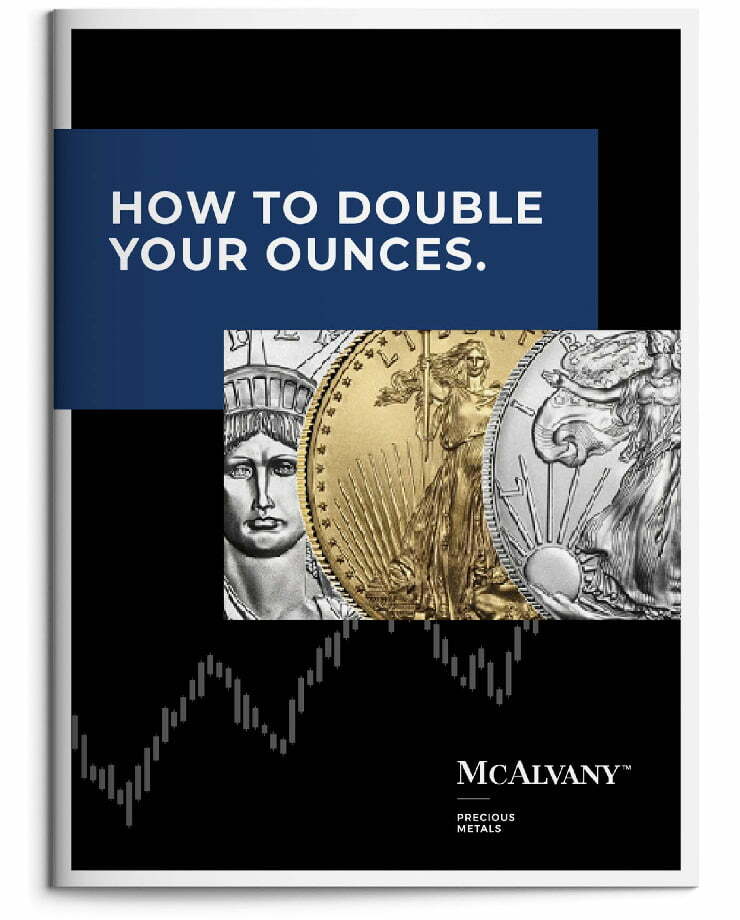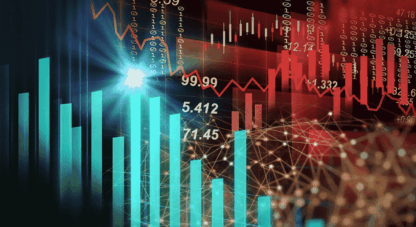The analysts at the McAlvany Financial Group focus this week on the turbulence being caused by the remaking of the world economy and trade system. As investors worldwide attempt to separate real threat from perceived threat during the transition, trends emerge and cause changes in international policy and investment decisions. Will those changes result in a healthier system or just destroy the existing one (a devil for certain, but at least the devil we know)? It’s likely too early for anyone to truly know, but the analysts provide key insight that can be helpful in preventing panic or emotional decisions. They also continue to emphasize the investment that does best during times of difficulty and uncertainty.
Key Takeaways:
- Who (or what) is responsible for gold’s price action since 2008?
- What happens when the dollar is no longer trusted?
- When the future is uncertain, invest in something that thrives on uncertainty
- When the dollar falters, gold picks up the load
The McAlvany Weekly Commentary: Central Banks’ Unstoppable Appetite For Gold
Since the 2008 financial crisis, central banks have shifted to being net buyers of gold, marking a dramatic policy choice to diversify away from dollars and Treasuries. This trend has been the primary driver of gold’s rise, as central banks’ price-insensitive buying has created shallow corrections and sustained higher prices. David highlights the profound correlation between central bank gold accumulation and its impact on market prices, emphasizing that this is a structural shift rather than a temporary trend. As gold remains in a secular bull market, retail investors have yet to fully participate, and analysts like David Rosenberg predict gold reaching $6,000 per ounce in the next 3–5 years, with silver poised to follow.
Credit Bubble Bulletin: Asian-Crisis-in-Reverse Feel
The latest market developments resemble an “Asian-crisis-in-reverse,” marked by significant volatility in currency and credit markets. A sharp surge in the Taiwan dollar, driven by unwinding U.S. dollar positions and repatriation by Asian investors, highlights growing fragility in global financial structures. As speculative flows reverse, confidence in the U.S. dollar and Treasury markets appears increasingly vulnerable, raising concerns of broader instability. Amid these dynamics, gold surged to $3,325, reaffirming its role as a reliable store of value during crises. The focus remains on preparing for potential upheavals by anchoring portfolios with assets that endure uncertainty.
Hard Asset Insights: To Correct, or Not to Correct?
The latest gold market analysis highlights the ongoing debate of “to correct or not to correct,” as investors grapple with heightened volatility and mixed economic signals along with strong historical evidence that gold tends to correct after extended moves up. While equities hint at overvaluation, the bond market faces pressures from rising yields, and gold continues to demonstrate its resilience as a stable store of value. The uncertainty surrounding global trade policies and monetary tightening underscores the importance of anchoring portfolios with dependable assets like gold. Looking ahead, the focus remains on preparing for multiple scenarios and navigating the turbulence with a steady, strategic approach.
Golden Rule Radio: Fiscal Woes Fuel Gold Demand
This week’s episode highlights the growing demand for gold as fiscal challenges mount, with supply chain disruptions, trade declines, and escalating U.S. debt driving interest in tangible assets. Gold rose 2.5% to $3,367, while silver dipped slightly, and platinum and palladium remained evenly matched. Central banks are significantly increasing gold reserves, signaling a waning confidence in fiat currencies. Meanwhile, the U.S. dollar index showed minor recovery but remains volatile, reflecting global economic stress. As the Federal Reserve adopts a “wait and see” approach amid rising inflation and debt refinancing pressures, gold continues to affirm its role as a stable anchor in uncertain times.















